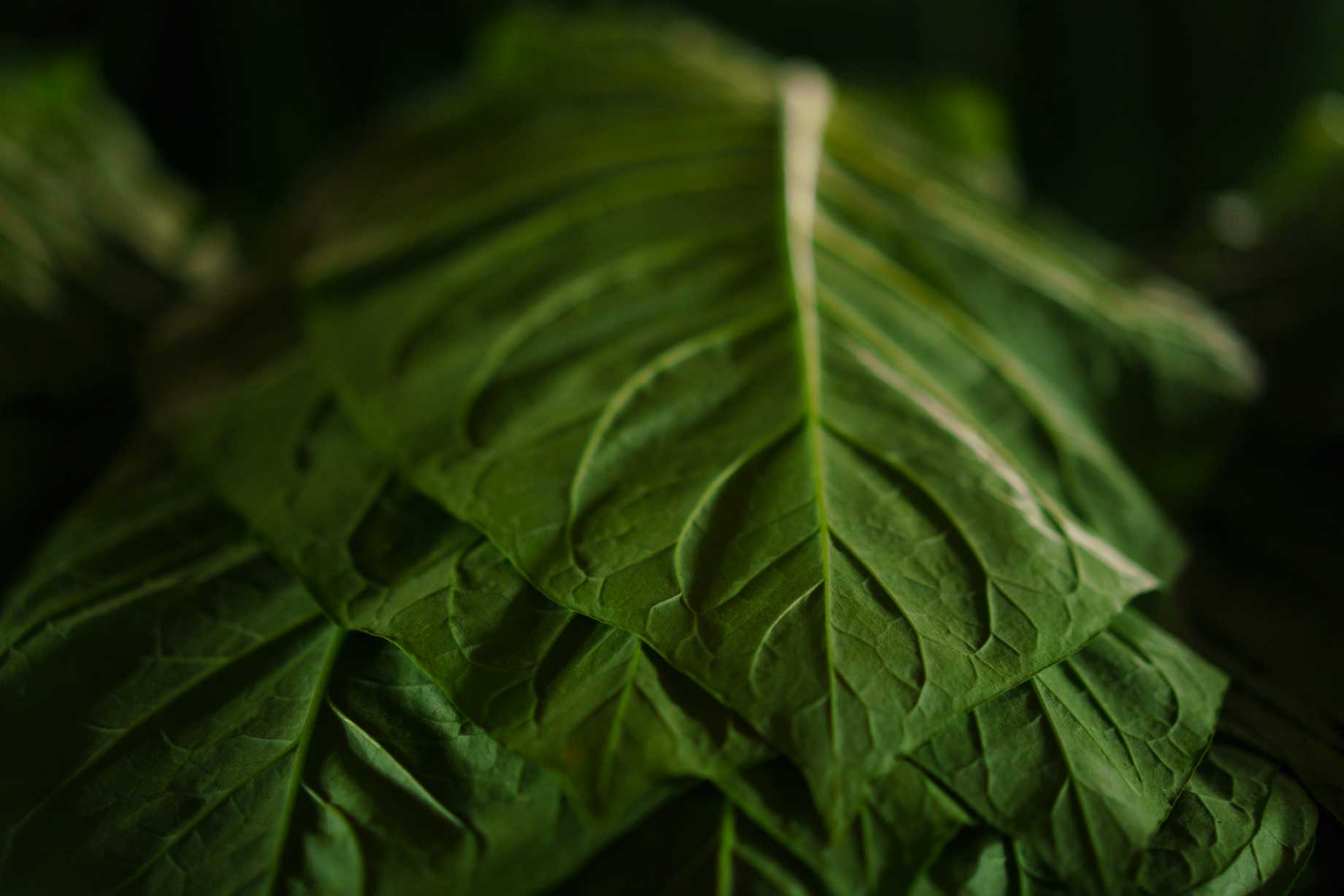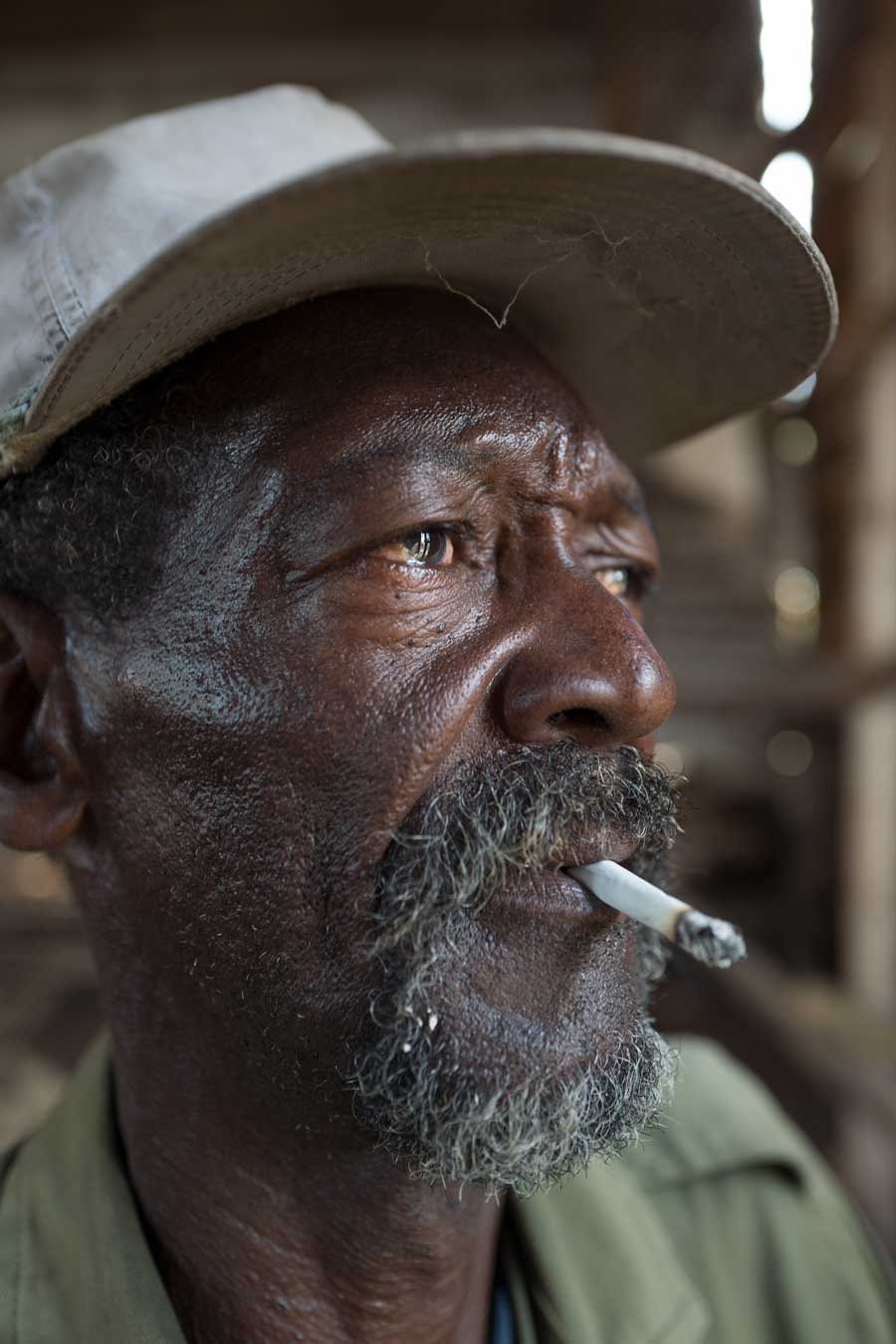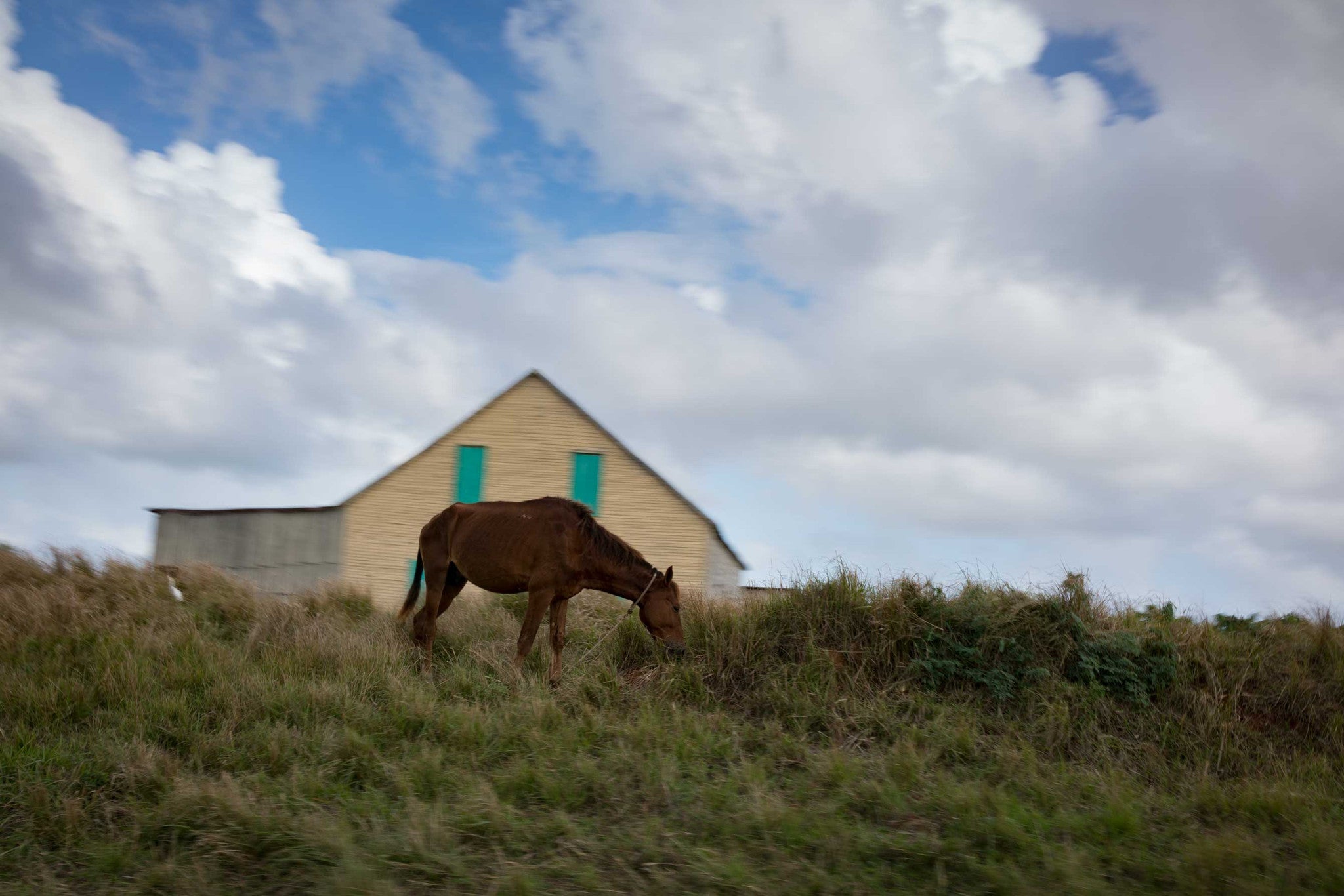Harvest Season
THE LEGACY OF TOBACCO
Pinar Del Río, Cuba
Scroll to explore
The Story
A CONVERSATION WITH HIROCHI ROBAINA
VEGUERO IN PINAR DEL Río, CUBA
Hirochi Robaina is a fifth-generation tobacco farmer in Vuelta Abajo, Cuba’s illustrious, tobacco-growing region situated in San Luis, Pinar del Río.
Following the traditions of his ancestors, and most notably of his grandfather Don Alejandro Robaina, Hirochi is at the helm of La Finca El Pinar Robaina, perhaps the most famous tobacco farm in the region, if not the world. Initially known for the high yield of quality tobacco for the wrapper, which is the most difficult to produce, the plantation now focuses its tobacco production on the Vegas Robaina premium cigar brand, exclusively distributed by Habanos SA, the Cuban state-owned tobacco company.
My grandfather’s knowledge is the knowledge of life. It was knowledge from the work itself and that is what he passed on to me, little by little.
HIROCHI ROBAINA, VEGEURO

S+O — TELL US ABOUT YOUR FAMILY’S HISTORY IN TOBACCO FARMING.
ROBAINA — Last year marked one hundred and seventy years in the tobacco production for my family on this land which is well over one and a half century.
My grandfather’s grandfather came from the Canary Islands of Spain and first harvested tobacco on this very plantation. It was passed down from generation to generation, throughout the years, to me now. My grandfather, Alejandro Robaina, was a pioneer. He was the one that elevated the quality of tobacco in this plantation with his experience, his innovation and his life’s work.

S+O — DID YOU ALWAYS ANTICIPATE FOLLOWING THE FAMILY TRADITION?
ROBANIA — My experience in tobacco stems from when I was born; it has always encircled me. As a kid, I have seen how tobacco is grown. How to pick it. How to roll it. I have been doing it for many years, already half my life.
I was born, and spent my first eighteen years, in Havana. I actually started working first at the Partagás factory and then the H. Upmann factory. In 1998, my grandfather asked me to come to the plantation so he could teach me the process. My grandfather’s knowledge was the knowledge of life. It was knowledge acquired from the work itself and that is what he passed on to me, little by little. He was my grandfather, my teacher and also my boss - all three things in one.
Not everyone has the opportunity to have this in their lifetime. I had that opportunity, and also the good fortune to accompany him to other places in the world to promote the Cuban cigar. And if you ask me, that was fantastic.
S+O — WHY ARE CONDITIONS IN PINAR DEL RÍO SO FAVORABLE FOR GROWING TOBACCO?
ROBANIA — Pinar del Río is the primary province when it comes to tobacco production in Cuba. There are four fundamental factors: climate, soil, variety and grower.
CLIMATE — This is due to the fact that Pinar del Río is situated in a zone where cold fronts first enter Cuba before they dissipate across the rest of the provinces.
SOIL — The soil in Pinar del Río has very good drainage. It's a special soil, ideal for tobacco harvest.
VARIETY — The variety in which the tobacco is grown plays an important role also. For the cigar to be good, we have to use different leaves. If you do it with only one type of leaf, it doesn't work.
GROWER — The history of growing in this particular region and the knowledge passed down gives us way more experience than other growers in other regions of Cuba.

S+O — HOW LONG DOES IT TAKE TO PRODUCE TOBACCO FOR CIGAR PRODUCTION?
ROBAINA — A lot of people believe that the work takes place during the harvest which is once a year for three months. In reality, it’s much longer than that.
The soil preparation begins in August. Then, in September, the plants arrive in the greenhouse nursery. It takes 35 to 40 days to prepare the plants so that they can be transplanted successfully into the ground. The plants will stay in the ground for between 80 to 90 days, depending on the variety. Then, once the plant has grown entirely, it can be harvested.
But to make tobacco for cigars, the curing process starts once the harvesting is over. This process is another 45 to 60 days, depending on the climate and temperature in that particular year.
We are really talking about a nine to ten month process to produce quality tobacco for cigars. This is a long-term technique and it occupies an entire community that’s dedicated to this craft.
We are really talking about a nine to ten month process to produce quality tobacco for a cigar. This is a long time and with entire community dedicated to this craft.




S+O — HOW IS THE COMMUNITY AROUND YOU INVOLVED IN THE WORK?
ROBAINA — The community factor is very important because these are people who also grew up around tobacco, whose parents and grandparents had been tobacco workers before them, and so on.
It’s like a family. There are workers in this plantation that have been working here for 48 years. Others for 30, or 35 years. That is crucial because in the tobacco industry, especially for the production of the wrapper, you need workers who have experience.



S+O — AS ALEJANDRO WAS A MENTOR TO YOU, IS THERE ANYONE IN YOUR FAMILY THAT YOU ARE NOW MENTORING TO TAKE OVER THE PLANTATION WHEN YOU ARE OLDER?
ROBAINA — I have a very beautiful family. I have four daughters. A lot of people ask, “Hirochi, what are you going to do in the future?There’s no successor.” But I don’t think there’s a problem with a woman being my successor. I hope that one of them will follow in my footsteps.
S+O — WHAT MAKES THE CIGAR A RITUAL TO ENJOY?
ROBAINA — It’s a symbol. When a child is born, we smoke tobacco. When a marriage takes place, we smoke tobacco. When a dear family member dies, we smoke tobacco. And when we close a big business deal, we also smoke tobacco.
It’s not something that people smoke when they are stressed. It’s not something to be smoked in a hurry. Tobacco smoking means leisure, peace and a calm state of mind. I've been saying for a long time that tobacco is going to be the key that will unlock the relations between Cuba and the United States, because tobacco is such a grand, influential industry, absolutely capable of bringing countries together.
S+O — AND THE CUBAN CIGAR? WHAT MAKES IT THE GRANDEST CIGAR IN THE WORLD?
ROBAINA — There are many countries that produce tobacco. Nicaragua, Dominican Republic, Mexico, Honduras, Ecuador. Tobacco is also produced in the United States – black tobacco. In Africa and China, tobacco is harvested as well. It’s not really a matter of “bad” or “good” tobacco.
It's just that they’re all different. The cigars are different. There are people who like cigars to be lighter. There are people who like cigars to be stronger. There are people who like cigars to be spicier. There are people who like them with the black wrapper… In the end, it’s all a matter of taste.
But, what you can be sure of, is that the best cigar in the world is the Cuban cigar.
There are many countries that produce tobacco… but what you can be sure of is that the best cigar in the world is the Cuban cigar.
Credits
Photography by Brian Sokol
Film by Alexander Hankoff
Special Acknowledgments - Katty Mayo,
Lillian Núñez Veliś and Pamela Ruiz
The Objects
Exclusive Edition 002 CIGARRO PURO
This farm-rolled cigar is made from tobacco grown in the Vuelta Abajo, the celebrated farming region of Pinar de Río in Cuba. Many of the farmers who continue the tradition of cultivating the plant come from a long line of ancestors who settled in the area from the Canary Islands of Spain. The Spanish fascination with tobacco began some five hundred years ago after Christopher Columbus discovered the island and dispatched emissaries to the interior of the island where they found the native Taíno participating in smoke rituals to communicate with their idols. Whereas today a Cuban cigar is seen as status symbol or for celebrations, in Cuba all classes of men and women enjoy the cigarro puro as a daily ritual. Available exclusively on Stories + Objects, the cigarro puro is a limited edition memento rolled in Cuban newspaper and presented in a hand-planed Spanish cedar and stone clay humidor.
The Destination
Pinar Del Río, Cuba
Pinar del Río is a province on the westernmost tip of Cuba. It features some of the most beautiful landscapes on the island, from steep limestone mogotes and verdant green valleys to turquoise waters. The microclimates and incredibly fertile soils have made the area one of the best tobacco growing regions of the world. Although the accommodations and overall tourist infrastructure leaves a bit to be desired at this time, some of the most authentic Cuban experiences await travelers willing to explore a few hours outside of Havana and adjust to the country pace of life in the province.



